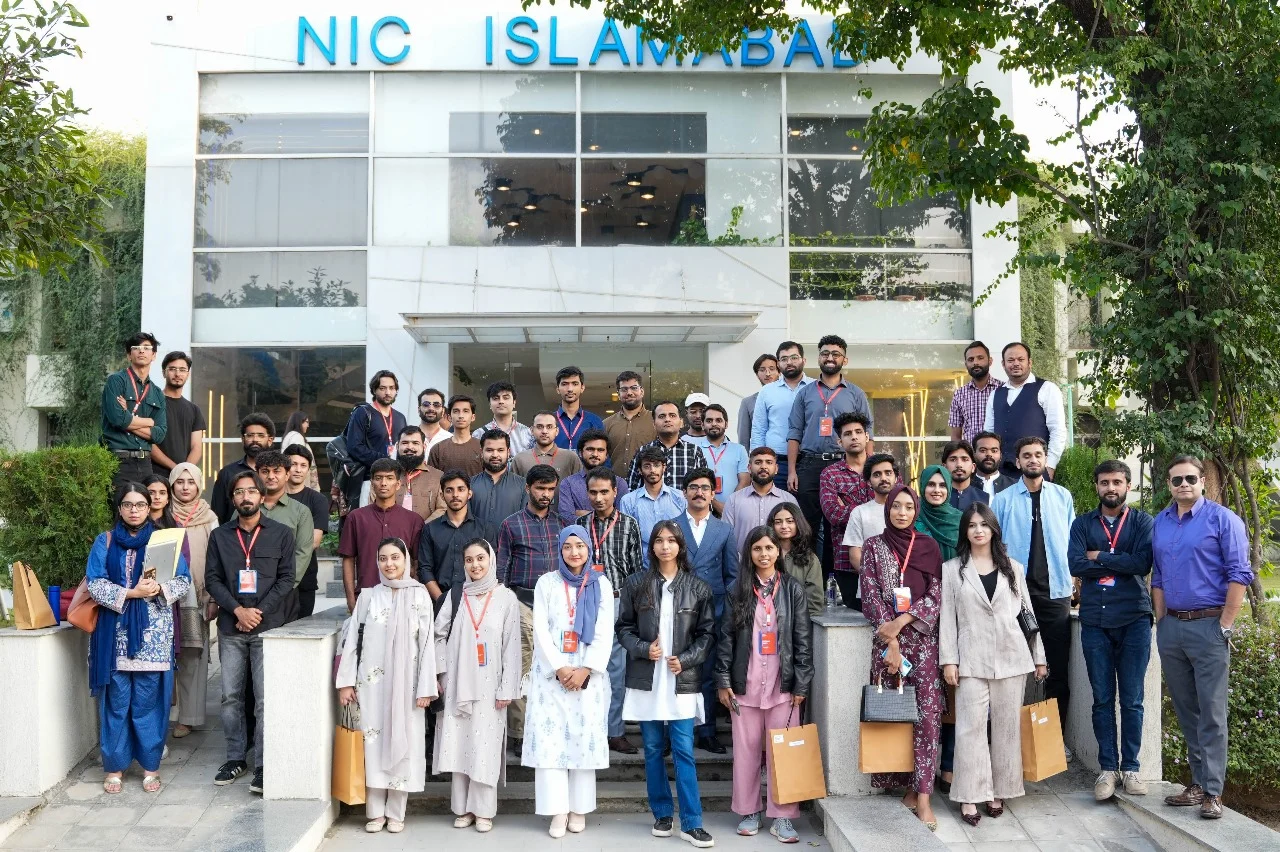The AI Revolution Has Officially Begun in Pakistan, Are You Ready to Ride the Wave?
In a landmark decision for the nation’s digital future, Pakistan’s AI Policy received unanimous approval from the federal cabinet in late July 2025. This pivotal new strategy, announced after a meeting chaired by Prime Minister Shehbaz Sharif on July 30, is a cornerstone of the government’s broader “Digital Pakistan” agenda. The policy’s stated purpose is to build a comprehensive AI ecosystem, aiming to democratize access to advanced technological tools, modernize public services, and create high-tech employment and innovation opportunities for the country’s youth.
Goals and Objectives
The policy has two broad objectives. First, it aims to harness AI for development and good governance, improving sectors like education, healthcare, agriculture and trade, and delivering smarter public services and economic planning. Second, it seeks to empower Pakistan’s young population by equipping them with AI skills and jobs. Officials stress that AI should spur innovation and entrepreneurship, not just be a government tool. The document explicitly targets new employment and business opportunities training millions of Pakistanis in AI, supporting homegrown tech products, and attracting private investment. It also emphasizes that AI use must be inclusive and ethical: extending access to women, the disabled and underserved regions, while strengthening data protection and cybersecurity.
Key Goals of Pakistan’s AI Policy
The policy outlines a detailed action plan with ambitious targets. Major initiatives include:
- Massive skills drive: Train 1 million AI professionals by 2030, including hundreds of high-tech certification programs and 3,000 annual scholarships for AI studies. Special emphasis will be placed on programs for women, people with disabilities and youth in remote areas.
- Innovation and venture funds: Establish an AI Innovation Fund and an AI Venture Fund to channel public money into AI startups and research. These state-backed investment vehicles are designed to crowd in private-sector funding and seed new enterprises.
- Civic AI projects: Launch 50,000 AI-driven public service projects over five years, using AI to improve healthcare clinics, agricultural extension, e‑governance, education and other citizen services.
- Homegrown AI products: Support development of 1,000 local AI solutions (software, platforms, apps) in five years. This includes building a Pakistani large language model and other culturally-tuned AI tools so that AI respects local languages and values.
- Research and scholarships: Fund 1,000 AI research projects and 3,000 postgraduate scholarships annually in AI and related fields. Centers of excellence and specialized AI centers will be set up in major cities to train talent and incubate startups (plans reportedly include hubs in Islamabad, Karachi, Lahore and other provincial cities).
- Regulatory and security frameworks: Strengthen cybersecurity and data protection protocols for AI systems, and align Pakistani regulations with global AI standards. The policy emphasizes ethical AI, data privacy and safeguards against digital threats. An independent AI Council (with government, industry and academic members) will be formed, backed by a Master Plan and action matrix, to oversee implementation and international compliance.
Core Focus Areas of Pakistan’s AI Policy
The policy spans multiple sectors. Education and workforce development are major themes: officials say AI literacy will be introduced at all levels. The plan calls for new AI curricula in schools and universities, plus short courses and certification programs for teachers, professionals and entrepreneurs. The government will push for nationwide digital literacy (part of the existing “Digital Pakistan” initiative on broadband and 5G) to ensure even rural youth can access AI tools.
In industry and innovation, the policy aims to jump-start a local AI market. By backing startups through funds and incubators, it hopes to create a vibrant private-sector ecosystem. The government intends to introduce incentives for example, subsidies or tax relief for companies developing Pakistani AI solutions although these specifics await clarification. Energy and infrastructure support is also highlighted: the finance ministry has already reserved 2,000 MW of electricity for tech use (e.g. AI data centers and crypto mining) to attract investment. In commerce, officials envision AI boosting Pakistan’s competitiveness: Prime Minister Sharif noted that AI tools in agriculture, industry and governance will raise productivity and foster “global relevance”.
On governance and regulation, the policy stresses both opportunity and caution. High-level officials (and even the Supreme Court) have noted AI’s potential to streamline government services and justice, but warned that integration must be “cautious and ethically grounded”. The policy therefore includes measures to align with international best practices. It also seeks global partnerships and compliance, signaling that Pakistan does not intend to develop a conflicting regulatory regime. In effect, regulators will be watching how data-sharing, privacy and algorithmic fairness are implemented as the AI agenda proceeds.
Major Initiatives Under Pakistan’s AI Strategy
For Pakistan’s tech startups and entrepreneurs, the AI policy is a clear positive signal. It allocates dedicated capital and support structures to the nascent AI ecosystem. Notably, two government-backed funds, an AI Innovation Fund and an AI Venture Fund will directly invest in private-sector AI projects. IT Minister Shaza Fatima Khawaja explicitly said these funds are meant to “support and promote the innovative ideas of youth and their startups”. In parallel, the policy calls for specialized incubators and Centres of Excellence; the goal is to have AI development hubs in cities (e.g. Islamabad, Karachi, Lahore) and to integrate AI training in existing university and incubation programs.
These initiatives dovetail with Pakistan’s broader tech strategy. Previous government programs have already set up software technology parks and IT zones, and the new AI funds build on that foundation. If implemented fully, startups could see lower barriers to entry and more funding sources. Analysts note that planned subsidies or tax breaks (for local AI software and hardware industries) could further sweeten the environment for young firms. In sum, observers expect the policy to boost entrepreneurship by providing mentorship, financing and infrastructure for AI ventures. As Shaza Khawaja put it, the policy is “meant to benefit all citizens” and to “join the ranks of leading tech-driven countries”.
Why Pakistan’s New AI Policy Is a Green Light for Investors
The AI policy also carries messages for domestic and international investors. By codifying its AI strategy at the cabinet level, Pakistan signals strong political commitment to digital innovation. Key elements like aligning with global AI standards and strengthening cyber-law aim to reassure foreign companies about regulatory clarity. Moreover, the government’s push to build physical infrastructure (e.g. data centers, the Pak-China data transit hub in Karachi) and the pledge of subsidized power for tech projects suggests an improved business environment for high-tech investors.
One analyst notes that Pakistan’s AI market could be worth billions in coming years. A tech industry report projects AI adoption could add roughly 7–12% to GDP by 2030, with the local AI sector reaching a multi-billion-dollar market. While projections vary, such figures underline the long-term potential. The new policy’s innovation funds and startup incentives are explicitly crafted to channel private capital into AI. In short, both local and foreign investors are likely to view the policy as a green light for technology ventures, provided the promised reforms actually materialize.
Challenges Ahead: Can Pakistan Deliver on Its AI Ambitions?
Experts caution that achieving the policy’s lofty ambitions will not be easy. Early critiques of draft AI strategies warned that Pakistan might be overreaching, setting too many targets without clear priorities. Dr. Athar Osama, a veteran IT official, noted that past drafts “tried to do everything and be everything for everyone”, lacking focus on a few achievable goals. He and others have urged the government to avoid duplicating efforts (e.g. too many new agencies or centers) and instead leverage existing tech incubators and universities.
Another concern is implementation capacity. Pakistan’s public sector has limited experience with cutting-edge R&D; critics say the plan should put more emphasis on private-sector enablement and entrepreneurship, rather than assuming the government can drive innovation alone. Funding will be a hurdle: meeting targets like 1 million trained professionals and thousands of scholarships requires sustained budget commitment. Infrastructure gaps (such as uneven internet access outside cities) could slow progress. Data sharing across governments for large AI projects also remains problematic. Finally, balancing progress with responsibility is tricky: although the policy stresses ethics, concrete regulations (and enforcement) for privacy and algorithmic bias are still under development.
So far, no major opposition has emerged in public debate, but implementation hurdles loom. Watchers note that setting up the AI Council and issuing the first grants will be the acid test. If these initial steps drag, public confidence could wane. In a country where many reform programs falter in execution, skeptics will be monitoring whether the AI policy’s plans translate into on-the-ground training, research and startups, or remain aspirational goals.
Implementation Timeline and Long-Term Impact of the AI Policy
In the near term, Pakistan will begin rolling out the policy’s first stages. Government officials say an AI Council and master plan will be established immediately. Observers expect initial pilot projects (for example, AI tools in a few hospitals or smart agriculture demos) to launch within months. The promised scholarships and training courses should also be announced soon, likely through universities and vocational centers. The two new funds will begin accepting proposals from startups, and early beneficiaries will be announced by year’s end if the schedule is met.
Looking to the long term, the government envisions a steady transformation. If targets are met by 2030, Pakistan would have a large AI-savvy workforce and thousands of local AI products. Economists suggest this could significantly boost the economy: one analysis projects the AI sector could reach ~$2.7 billion by 2030, growing at ~22% annually. Government planners hope increased productivity in farming, industry, governance and services (for example, using AI for crop forecasting or automated tax processing) will raise GDP and living standards.
However, much depends on sustained effort. Success will require effective coordination between ministries, academia and the private sector, a noted challenge in Pakistan’s policymaking. Maintaining momentum beyond the political headlines will be crucial. If implemented well, the policy could usher in a new era of innovation and attract fresh investment. If not, it risks joining the long list of grand plans that yield limited results. For now, Pakistani entrepreneurs, investors and citizens will be watching closely as the country moves from policy paper to practice.
Also Read
Google’s AI AcademyFAQ
Pakistan’s National AI Policy 2025 is a government-led initiative aimed at leveraging artificial intelligence to improve public services, boost economic growth, and empower youth through education, training, and innovation support.
The policy introduces dedicated innovation and venture funds, scholarships, and infrastructure to support AI startups, while signaling regulatory clarity and growth potential to attract local and foreign investors.
The policy focuses on AI-driven development, improving governance, expanding education and skills training, supporting ethical AI use, and creating a strong private-sector ecosystem for AI innovation.




